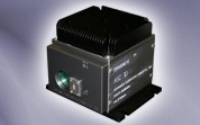Sep 21 2010
Advanced Scientific Concepts (ASC), a leader in the field of 3D FLC (Flash LIDAR Cameras) is now launching the new DragonEye 3D FLC which is to be used in space missions.
 DragonEye 3D FLC
DragonEye 3D FLC
This camera is a compact, featherweight device, with dimensions of 11.2 x 11.9 x 12.2 cm, utilized for AR&D (Automated Rendezvous and Docking) and possible OSS (On-Orbit Satellite Servicing). This sensor engine has been tested on the STS-133 Discovery and on NASA’s STS-127 Endeavour orbiter and also used as the central 3D sensor in the NASA Langley Research Centre for ALHAT (Autonomous Landing and Hazard Avoidance) efforts.
Being the first 3D FLC to be used in space missions, the DragonEye’s superior, cutting- edge technological components such as eye-safe lasers are used in a non-mechanical camera, with illumination, for obtaining images without motion distortion effects, through an Ethernet connection. They are also employed to give real-time inputs for GNC systems (Guidance, navigation and control). ASC’s 3D FLC, are used widely and also in fields, such as the Automotive industry, Surveillance, Defense, Aviation and Robotics.
According to the CEO and President of ASC, Dr Roger Stettner, ASC’s many years of experience in working with organizations such as Johnson, NASA Langley, Jet Propulsion Lab and other commercial concerns have helped in the creation of the enhanced non-scanning 3D technology for space exploration. He insisted that the 3D Flash LIDAR camera would dramatically transform the space industry as it facilitates new space solutions such as making or creating an autonomous rendezvous with either manned or unmanned options, docking and landing processes.